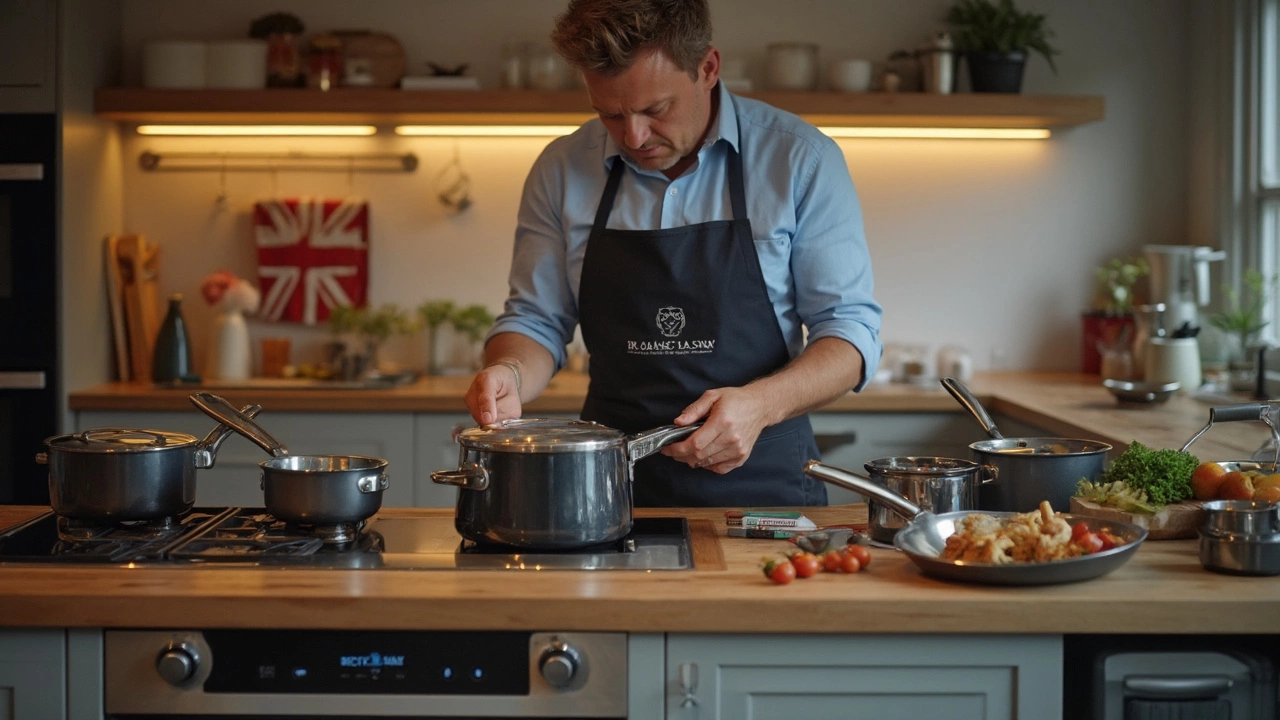Cookware Sets: Find the Right Set for Your Kitchen
When you walk into a kitchen store and see rows of pots and pans, it can feel overwhelming. The good news is you don’t need to buy every single piece. A well‑chosen cookware set gives you the basics you’ll actually use, saves space, and often costs less than buying items one by one. Below you’ll get a straight‑forward rundown of what to look for, the main types of sets, and how to keep them in top shape.
What to Look for in a Cookware Set
First, think about the dishes you cook most. If you love stir‑fry, a heavy‑bottom wok or a nonstick skillet is a must. If you’re a fan of soups and sauces, a good stockpot or a deep saucepan should be on the list. Make a note of the sizes you need – a 8‑inch pan for eggs, a 10‑inch pan for pancakes, and a 12‑inch pan for searing meat cover most everyday tasks.
Material matters a lot. Stainless steel is durable, doesn’t react with food, and works on all cooktops, including induction. Nonstick coatings make cleanup easy but can wear out after a few years, so you might want a set that mixes nonstick pans with stainless steel ones. Cast iron holds heat like a champ; it’s perfect for slow‑cooking and gives a great sear, but it’s heavier and needs seasoning.
Check the handle comfort. Heat‑resistant, ergonomic handles keep your hands safe and make the pans feel balanced. Look for lids that fit tightly – glass lids let you watch food without lifting, while metal lids seal in moisture better.
Finally, think about your budget. Mid‑range sets often use a blend of stainless steel and an aluminum core, delivering even heating without breaking the bank. High‑end sets may offer multiple layers of metal and premium finishes, which last longer but cost more.
Top Types of Cookware Sets and How to Care for Them
Stainless Steel Sets – These are the workhorses of many kitchens. They’re rust‑proof, dishwasher safe, and can go from stovetop to oven. To prevent food from sticking, preheat the pan, add a little oil, then add your ingredients. If you notice water spots, wipe the surface with a soft cloth and a little vinegar.
Nonstick Sets – Ideal for eggs, pancakes, and low‑fat cooking. Use only silicone, wooden, or plastic utensils to avoid scratching. Hand‑wash whenever you can; harsh detergents can break down the coating over time. Replace the set when the surface starts to chip.
Cast Iron Sets – Great for high‑heat searing and slow braising. Season your pans regularly by wiping a thin layer of oil on the surface and heating it in the oven. Avoid soaking; instead, scrub with a stiff brush and dry immediately to stop rust.
Hard‑Anodized Aluminum Sets – They heat quickly and are usually nonstick. Like stainless steel, they’re dishwasher safe, but the nonstick side still needs gentle care. Avoid metal tools and high heat to keep the coating intact.
Once you pick a set, treat it like a tool you’d keep in a garage. Store pots and pans with a protective layer (a cloth or pan protector) to avoid scratches, and keep lids separate to prevent chipping. A quick inventory every few months helps you spot wear early and replace only what’s needed.
In short, the perfect cookware set matches your cooking habits, fits your stovetop, and stays within your budget. By focusing on material, size, and handle comfort, you’ll end up with a set that serves you for years. And with simple care steps, those pots and pans will keep looking good and performing well, meal after meal.
Curious about Gordon Ramsay cookware? This article breaks down what sets it apart, how it performs in everyday kitchens, and what you need to watch out for when shopping. Discover product lines, real-life benefits, and why home cooks and pros both pay attention to Ramsay’s pans, pots, and tools. You'll pick up tips for choosing the right set and learn which features actually matter. Find out if this popular cookware lives up to its famous name.
May, 10 2025
